Share
Explore

Here are Seven Tips to Help Engage Angular Developers
Last edited 120 days ago by HIMANSHU GULATI.
This article provides seven tips to help you engage Angular developers and build expertise with this framework. Following these tips, you'll create components, services, routing, and building reactive forms in no time. Angular, created by Google, is a popular choice developers use to build interactive web applications. Whether you want to build a basic web app or a large enterprise system, Angular has you covered.
Know the Fundamentals of Angular
To build an Angular application, you must first understand the fundamentals of the framework.
Components
Components are the building blocks of Angular applications. They display data on the page and handle user input. An Angular app is a tree of components, with a root component at the base.
Templates
A component's template defines its view. It is HTML and contains the component's data and logic bindings.
Data binding
Data binding syncs data between the component and its template. There are in Angular:
Directives
Directives are used within templates to add custom behavior to elements. The most common directives are:
To build robust web applications with Angular, you must first understand its fundamentals - components, templates, data binding, and directives. With a solid foundation, you'll be constructing sophisticated UIs quickly.
Provide Clear Documentation and Resources
To effectively engage Angular developers, provide comprehensive documentation and resources.
Clear Documentation
Having detailed documentation on your Angular app, components, services, etc., allows developers to quickly understand the architecture and contribute efficiently. Include:
Useful Resources
Provide resources to supplement the documentation:
With comprehensive documentation and resources, Angular developers will gain the knowledge they need to be productive team members. Be sure to keep all information up-to-date with each app release to avoid confusion. Providing a good developer experience leads to higher engagement and motivation.
The Cost of Hiring Angular.js Developers Should be Considered
Cost-effectiveness is key for companies, and hiring Angular.js developers can offer several economic benefits.
Cost Savings vs. In-House Teams
Where a large in-house development team can be costly, firms can as they better understand the industry's changing needs and can furnish valuable solutions for it. Corporations should cover salaries, benefits, workplace area, and equipment costs with in-residence teams.
Eliminating Training Expenses
Training new in-residence Angular.js builders can be a time-consuming and expensive process. Skilled Angular.js developers are already proficient in their craft, requiring minimum training to begin a project. This removes the want for giant onboarding and decreases the associated prices. Businesses can benefit from the immediate right of entry to experienced intelligence, barring the delays and fees related to schooling.
In assessment, businesses can extensively lessen overhead expenses while hiring Angular.js developers on a project foundation or via outsourcing. This method allows corporations to allocate their budgets more successfully, directing sources in which they want maximum.
Project Budget Optimization
Hiring Angular.js builders provides a degree of flexibility that could optimize task budgets. Businesses can scale their development teams up or down primarily based on undertaking requirements. It is clear to bring in greater builders while a challenge calls for additional sources.
Adopt Best Practices for Code Quality
To develop a high-quality Angular app, adopt these best practices:
Follow Style Guide Recommendations
Angular provides an official style guide with recommendations for syntax, conventions, and application structure. Following these guidelines helps keep code clean, consistent, and maintainable across a team. Some key points include:
Write Clean, Modular Code
Break up large, complex components into smaller, reusable ones. Extract repetitive logic into services. Keep components focused on one task. These steps make the codebase easy to navigate, test, and maintain.
Add Testing
Write unit and end-to-end tests to catch bugs early and ensure a high-quality user experience. Tests give developers the confidence to refactor code and build new features, knowing they did not break existing functionality.
Enable Collaboration and Knowledge Sharing
To engage Angular developers and encourage collaboration, prioritize knowledge sharing in your organization. Provide opportunities for developers to connect and learn from each other.
Offer mentoring programs where senior developers advise junior developers. Set up digital or physical spaces for developers to ask each other questions and share insights. Consider hosting regular meetings where developers can present on projects they’re working on or new technologies they’ve learned.
Document key processes, standards, and best practices to help onboard new developers and ensure project consistency. Make this documentation easily accessible to the entire team. Consider using a wiki, knowledge base, or project management tool where developers can contribute and update content.
Promote an open culture where developers feel comfortable asking questions and sharing knowledge. Recognize developers who actively help others and contribute to the team’s growth. Their support and guidance will be invaluable, especially for newcomers.
Give developers access to online courses, video tutorials, books, and other educational resources to help them strengthen their Angular skills. Provide time for them to explore these resources during work hours. Staying up-to-date with the latest Angular releases and best practices will equip them to build robust web applications.
Foster an inclusive environment where all developers feel their voices and input are valued. Diversity of backgrounds and experiences within a team leads to more creative problem-solving and higher-quality work. Value each developer for their unique contributions and perspectives.
By enabling collaboration, sharing knowledge, and supporting , you will have a highly engaged team of Angular developers. Give them opportunities to grow together, and they will build innovative web solutions.
Conclusion
As you have seen, there are several effective ways to keep your Angular developers motivated and productive. Provide clear requirements and documentation, give them autonomy in their work, offer learning opportunities to expand their skills, recognize their achievements, foster an open work environment where questions are encouraged, give constructive feedback, and make time for face-to-face interactions.
Want to print your doc?
This is not the way.
This is not the way.

Try clicking the ⋯ next to your doc name or using a keyboard shortcut (
CtrlP
) instead.